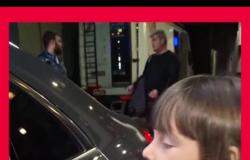
It is the first time that, in more than 100 years of history, the Venice Biennale appoints a Latin American as main curator. The chosen one was the Brazilian Adriano Pedrosa (Rio de Janeiro, 1965) who, as a way of breaking with the Eurocentric tendency of the important artistic meeting, established a theme that has sparked a lively conversation, with healthy controversies included: “Foreigners everywhere ” is the statement that sets the tone for the 60th edition of the biennial, which opens next Saturday, April 20.
SEE ALSO: Why has the Peruvian top Juana Burga been waiting for the premiere of the film “The Most Feared Skin” for years?
Along these lines, the formation of the artistic pavilions of this biennial will be, more than ever before, defined by diversities, by the indigenous presence, and by all those manifestations usually pushed to the margins. It stands out, for example, that the Spanish pavilion is bringing as a representative—also for the first time in its history—an artist not born in Spain: the Peruvian Sandra Gamarra Heshiki (Lima, 1972) with her “Pinacoteca migrante.” An unprecedented turn within the broad and complex process of decolonization that the artist’s work has influenced.
In the Peruvian pavilion, the “Huellas cosmicas” project is based on one of the monumental photograms by Roberto Huarcaya (Lima, 1959), developed in the Tambopata jungle. With this he postulates a reflection on the foreign from the dichotomy between the “civilized” (us) and nature (the other).
In addition to Gamarra and Huarcaya in their respective national pavilions, the biennial’s international exhibition—which Pedrosa curates—will include works by six other Peruvian artists. Three historical figures: Julia Codesido (1883-1979), José Sabogal (1888-1956) and Elena Izcue (1889-1970); and three contemporaries: Santiago Yahuarcani (Pebas, 1960), his son Rember Yahuarcani (Pebas, 1985) and Violeta Quispe (Lima, 1989).
NEW SPEECHES
“The theme that Pedrosa has chosen, around being a foreigner everywhere, fits perfectly with the way that indigenous communities have felt in the last 500 years, due to their impact with the Western world,” says Rember Yahuarcani. “If in itself there is daily discrimination and institutionalized segregation from the State, let’s not talk about the situation of contemporary art, in which indigenous artists often do not have a space in the academy or in the market,” he adds.
Yahuarcani Jr. will bring to Venice some works with a strong political charge: in one, “The River,” he denounces how the great powers of the world—the United States, Russia, China or the European Union—may differ in their ideologies, but they all agree in their contempt for native communities; In another, titled “Those Other Worlds,” he warns about the murders of indigenous leaders and activists.
Rember’s father, Santiago Yahuarcani, also includes the complaint in his large-format works. In one of them, “Here is hot,” he represents the Uitoto myth of Jusiñamuy devouring “those who behave badly.” “Those who steal, those who mistreat nature, the lazy appear there. But now I have integrated more contemporary characters, who directly represent Peruvian politics,” says the artist.
Violeta Quispe, meanwhile, takes the art of Sarhua boards—an Ayacucho tradition cultivated by her family—one step further: far from the typical conservatisms of the community, she aims to break a series of stereotypes linked to identity. “Many times when they ask me where I’m from, I can’t define an origin clearly. I feel more Sarhuina than Lima, but I cannot say that I am completely Andean either. In my own community I am sometimes a stranger,” Quispe explains about her notion of the foreign.
Gender issues are also strongly rooted in her work. Among the pieces that the biennial will exhibit is an “Ekeke”—a ‘queer’ version of the popular ekekos—; “The Marriage of the Chola”—which reverses the colonial painting “The Marriage of the Ñusta”—; and a large-format panel that, among other figures, shows female apus and hermaphrodite beings in daring erotic exchanges. Because there is nothing more traditional than blowing up tradition.
Besides…
Know more
The 60th edition of the Venice Biennale will take place in the Giardini and Arsenale of the City of Canals, from April 20 to November 24. Curated by Brazilian curator Adriano Pedrosa, its theme is “Foreigners everywhere.” Under this premise, it is open to artistic proposals that emphasize the different, the unknown and the marginal, to approach creations that break the molds of what is established.





